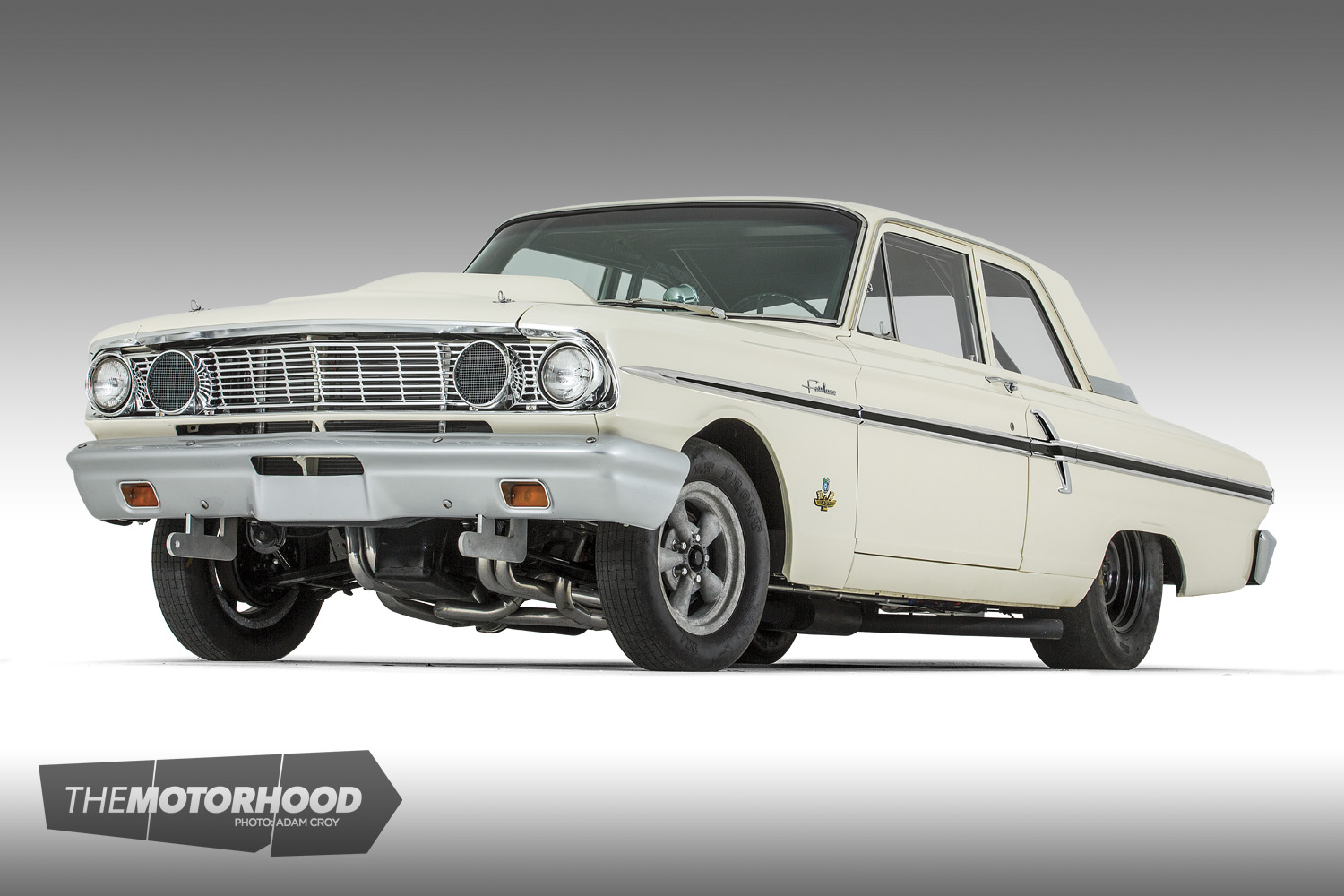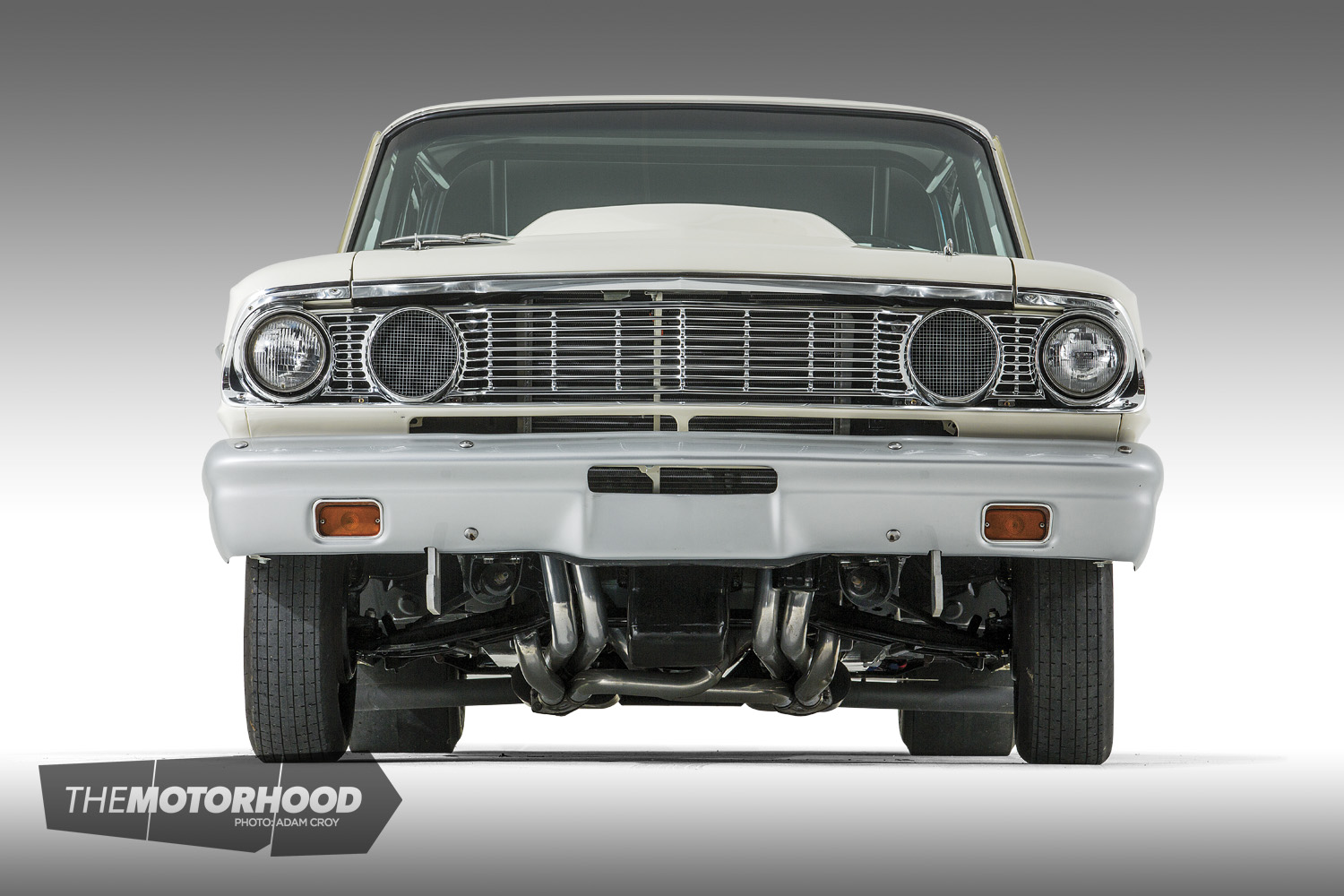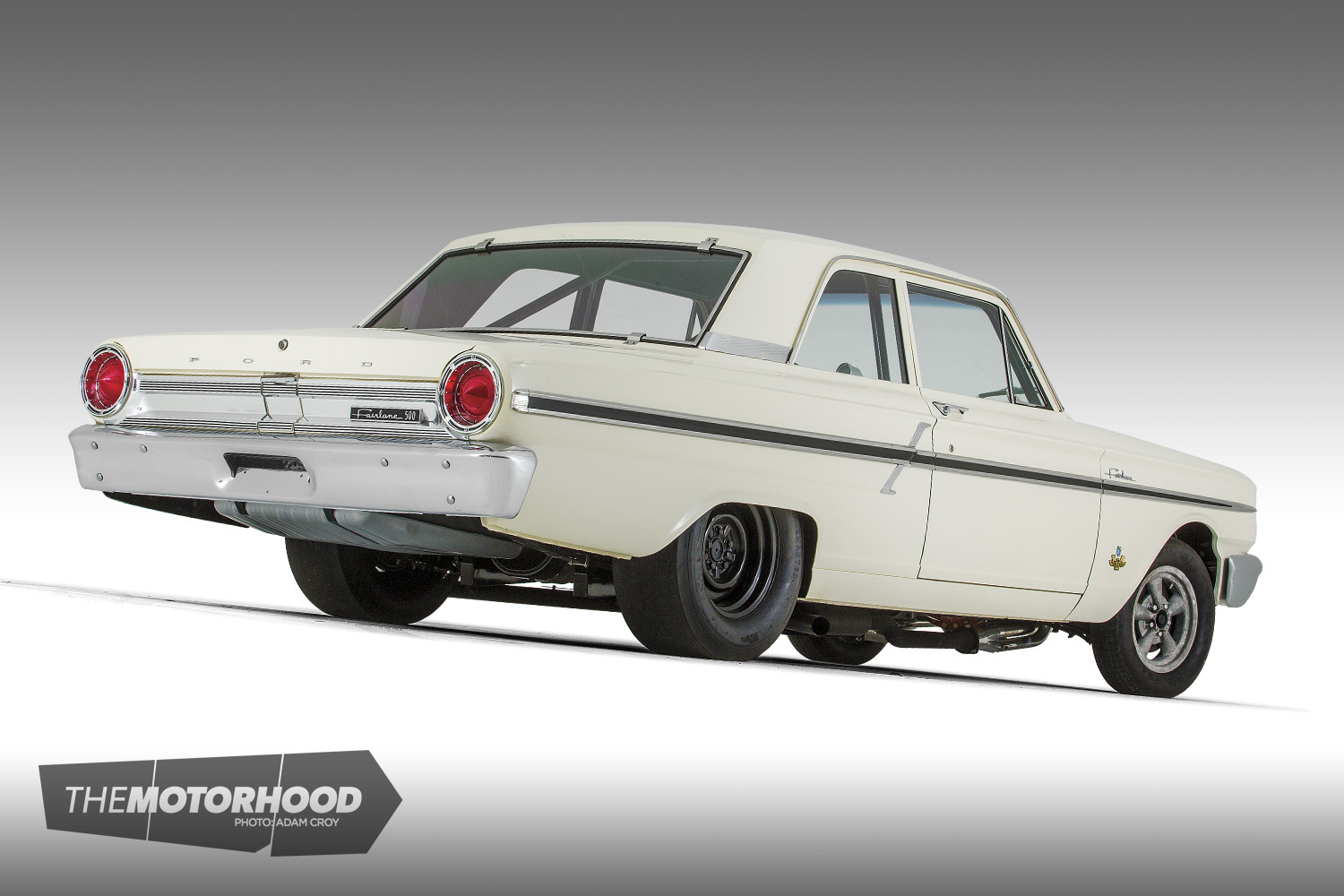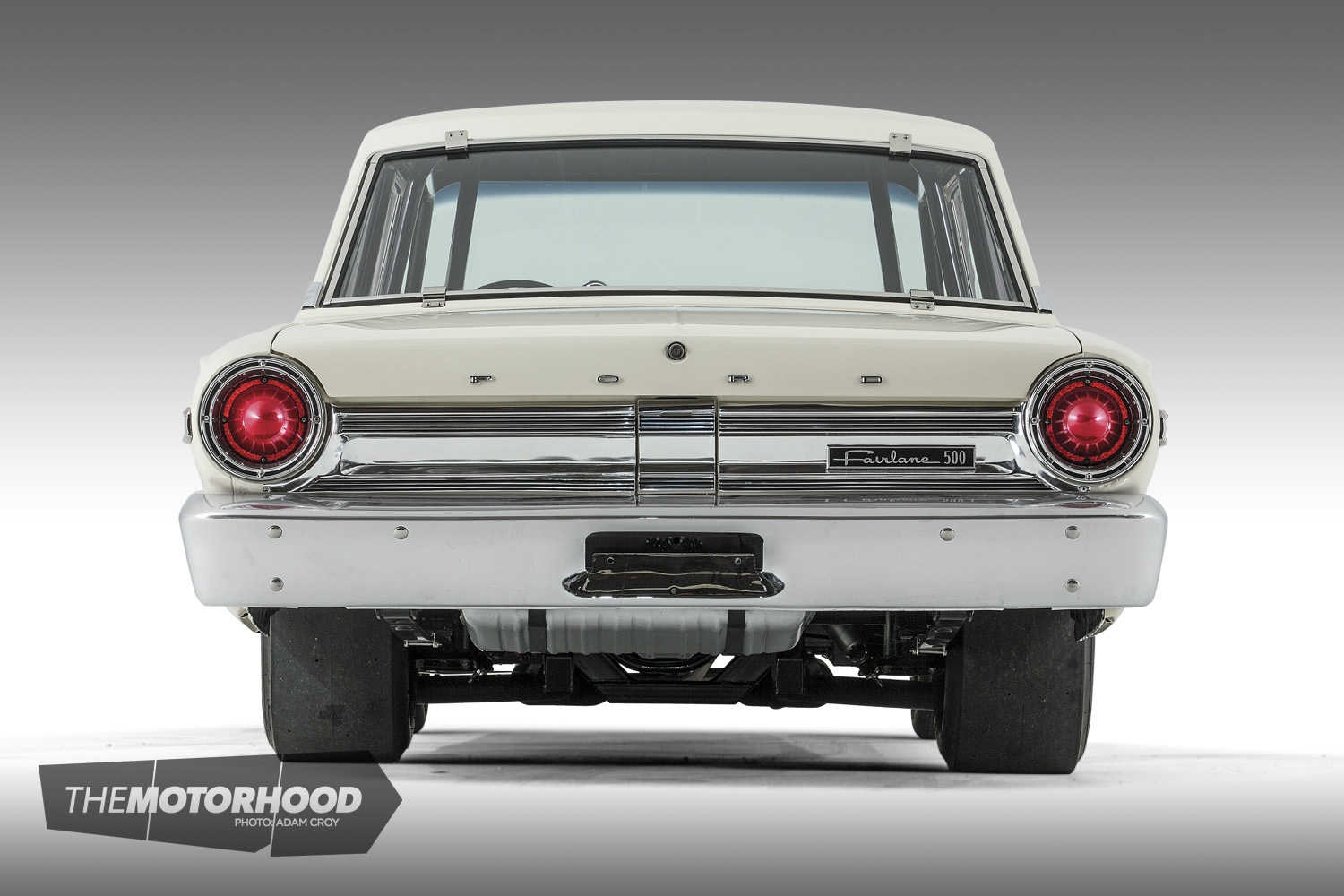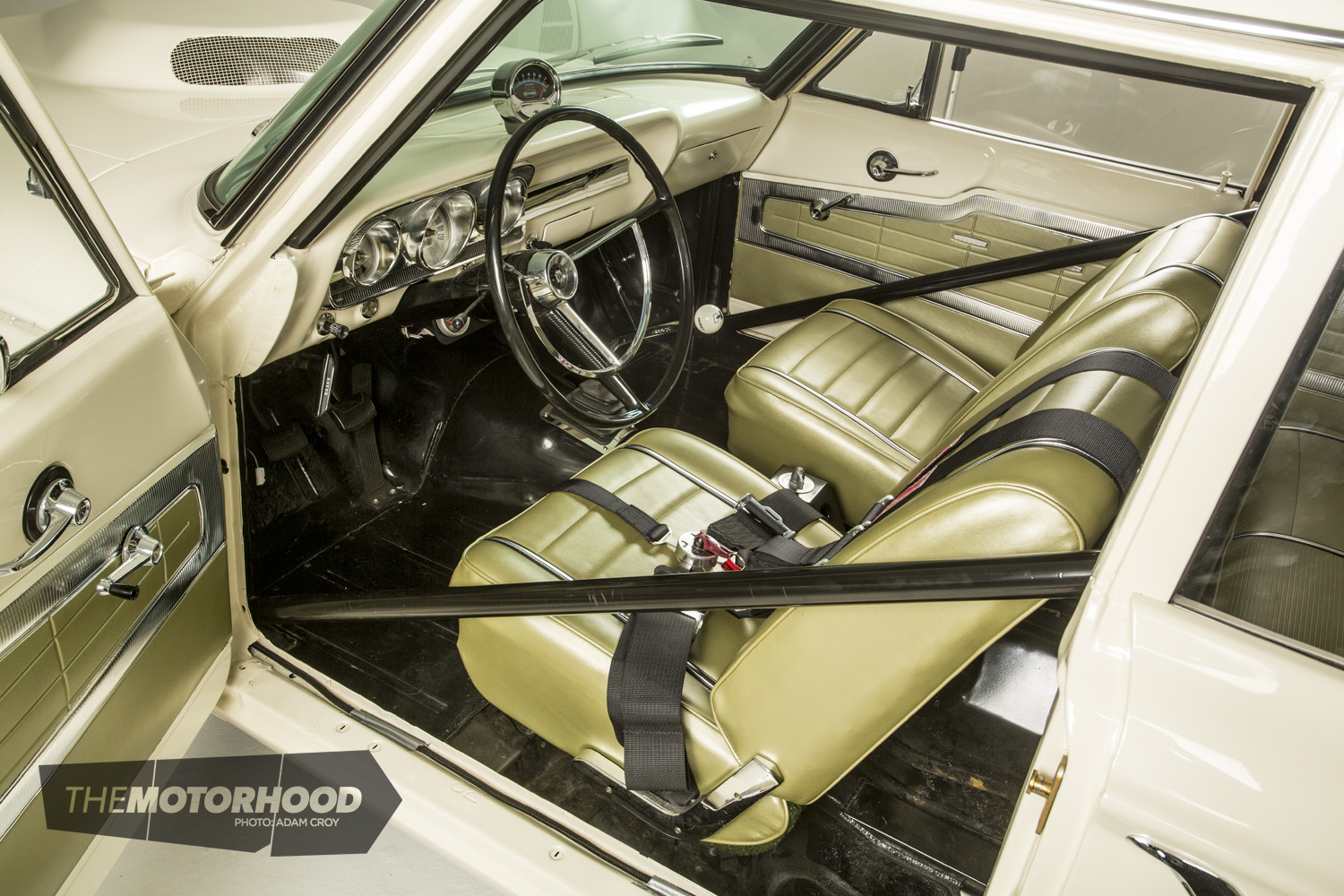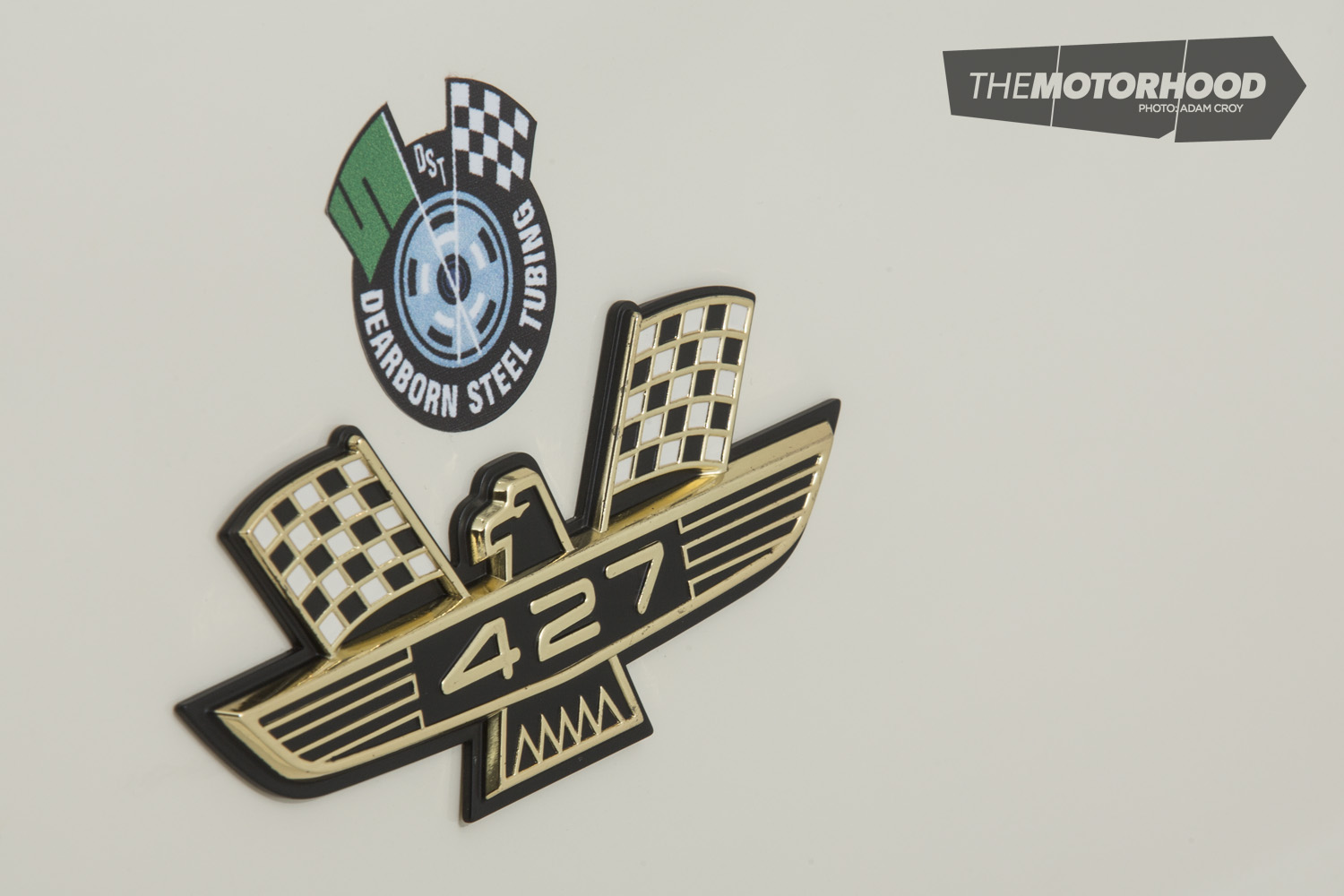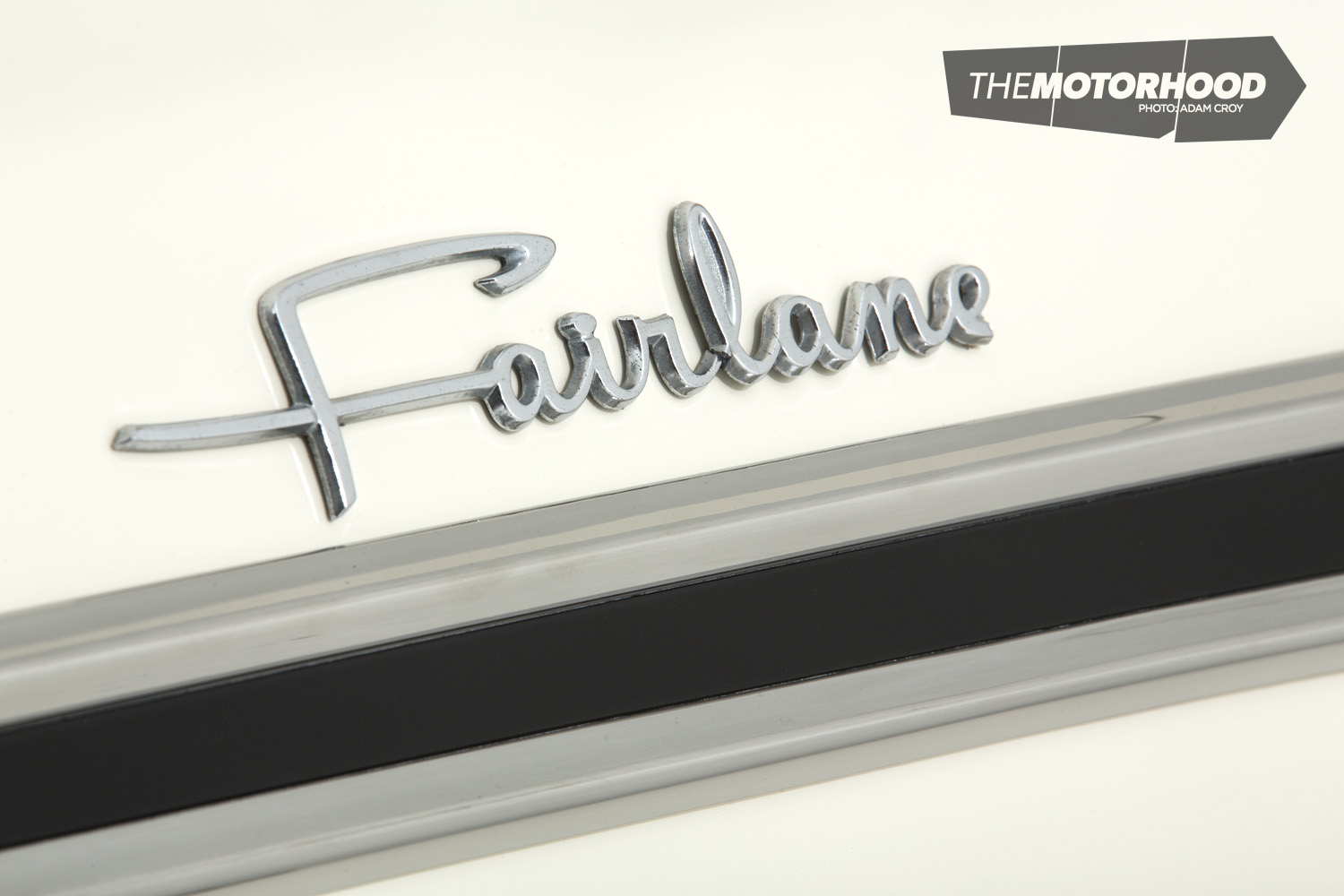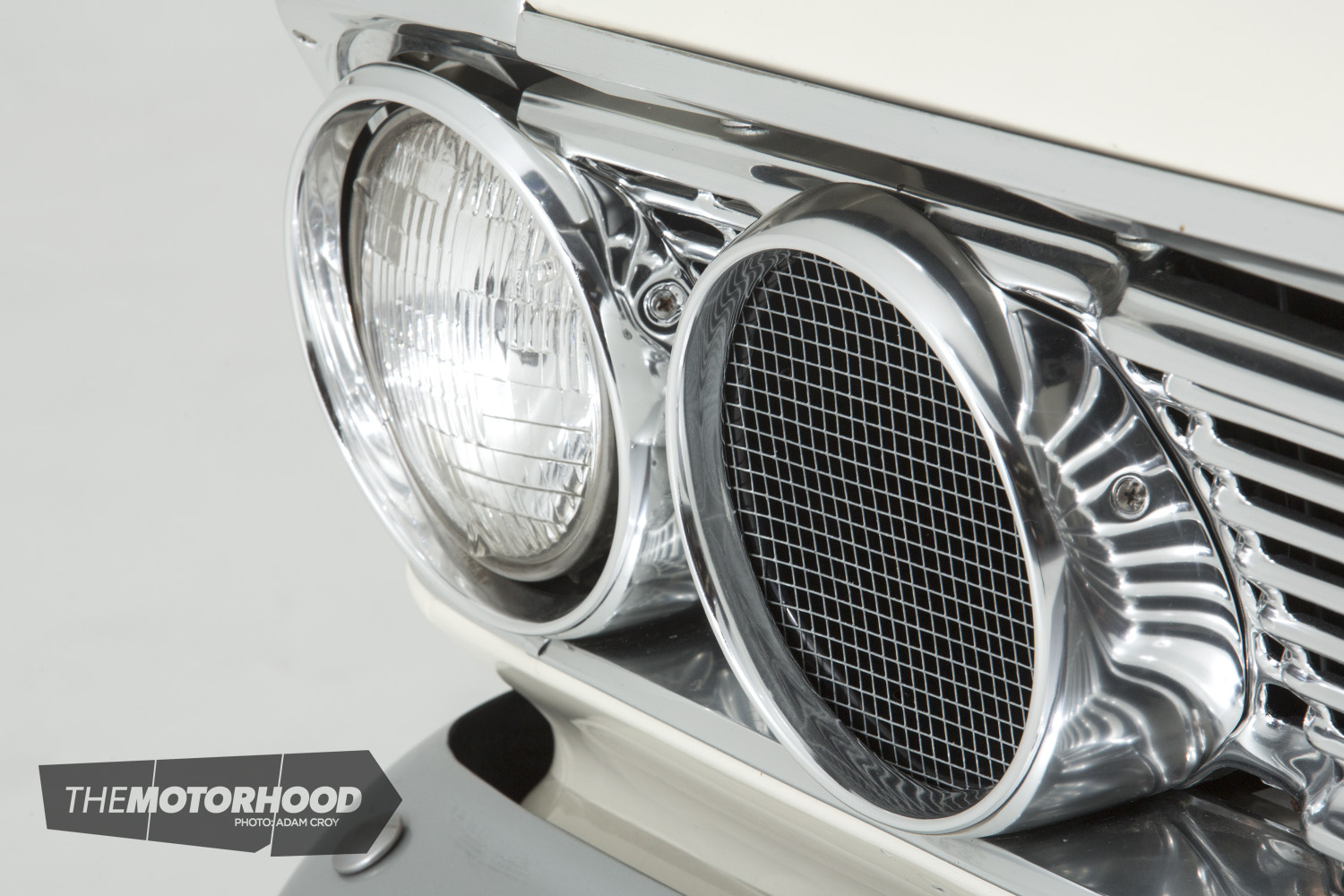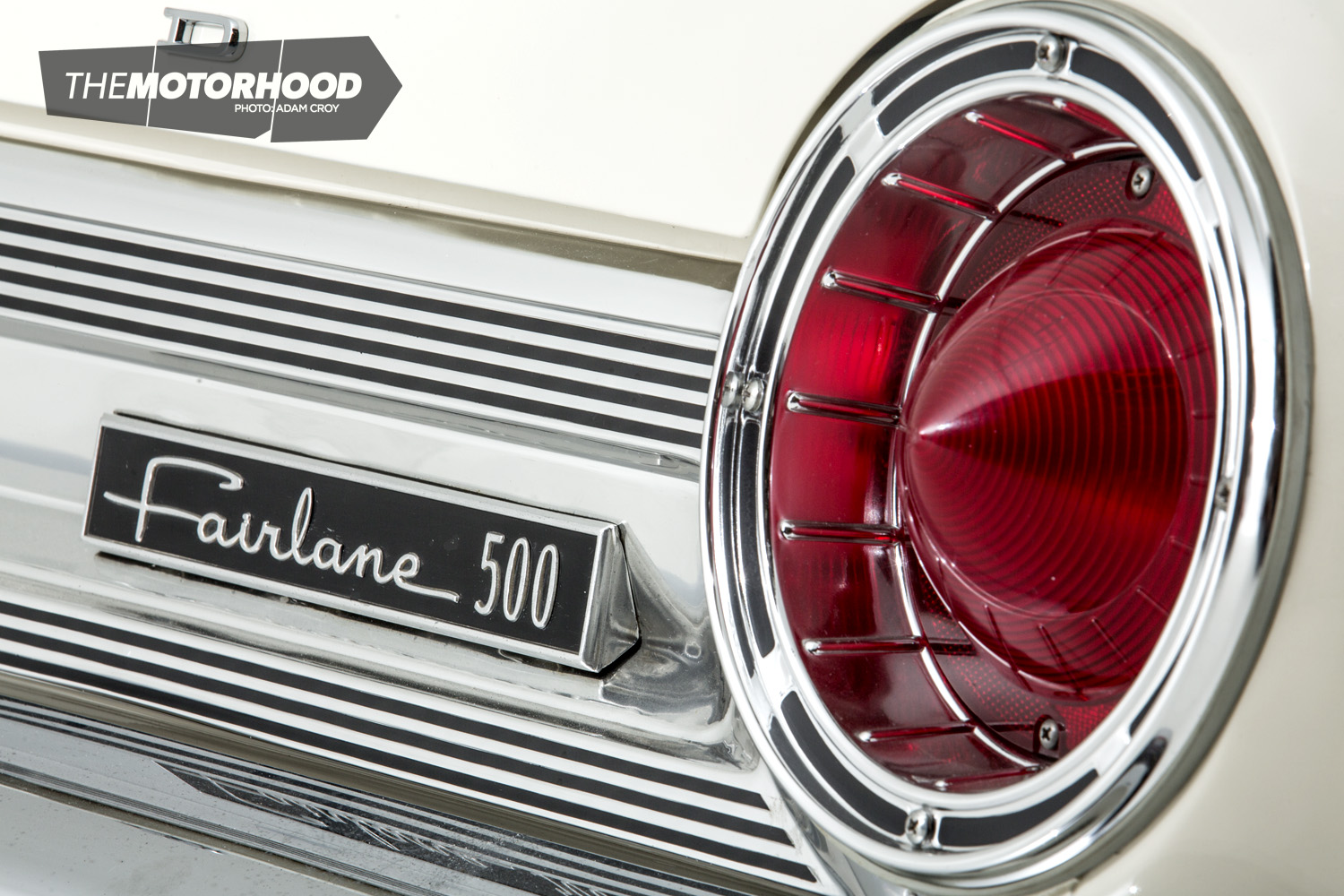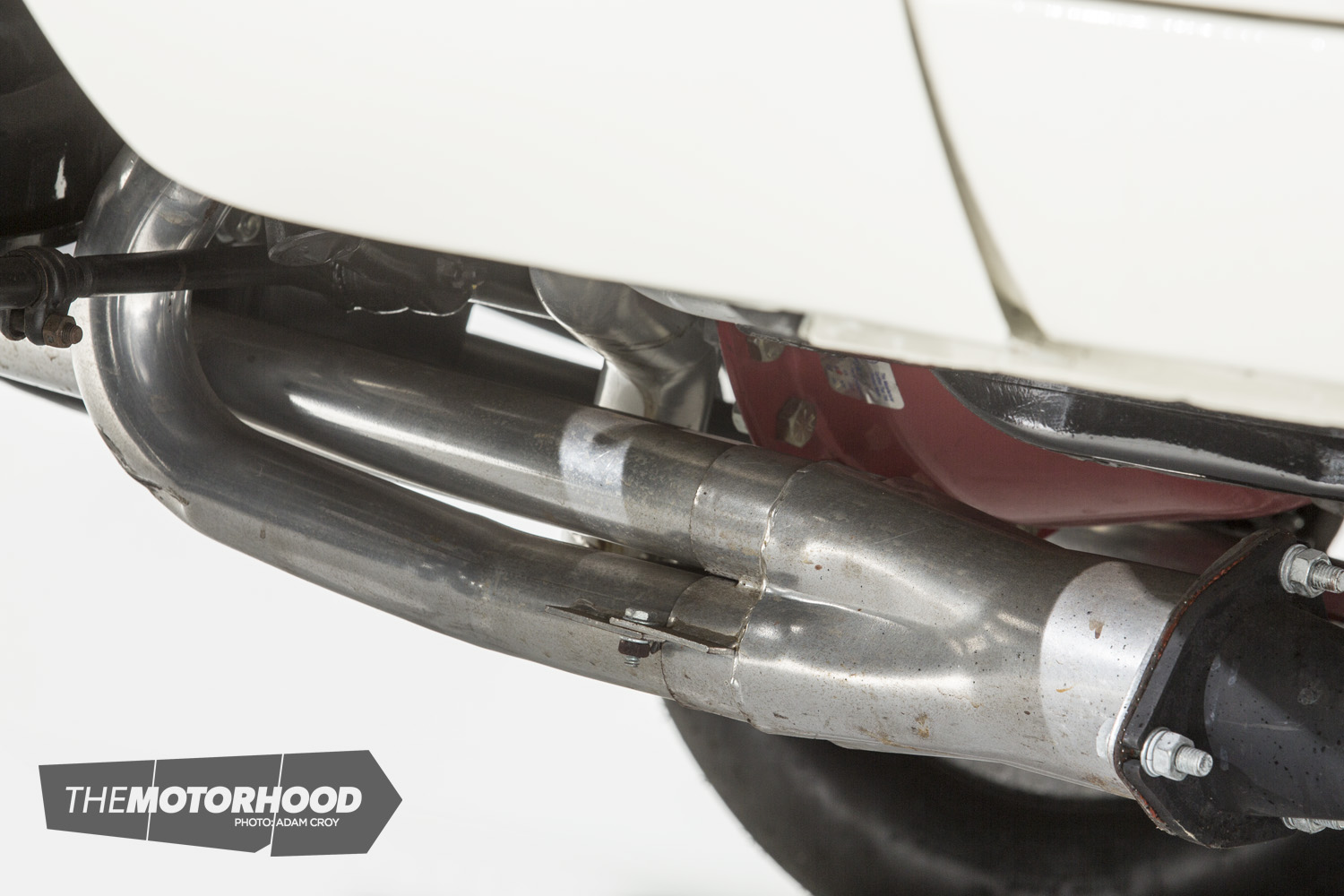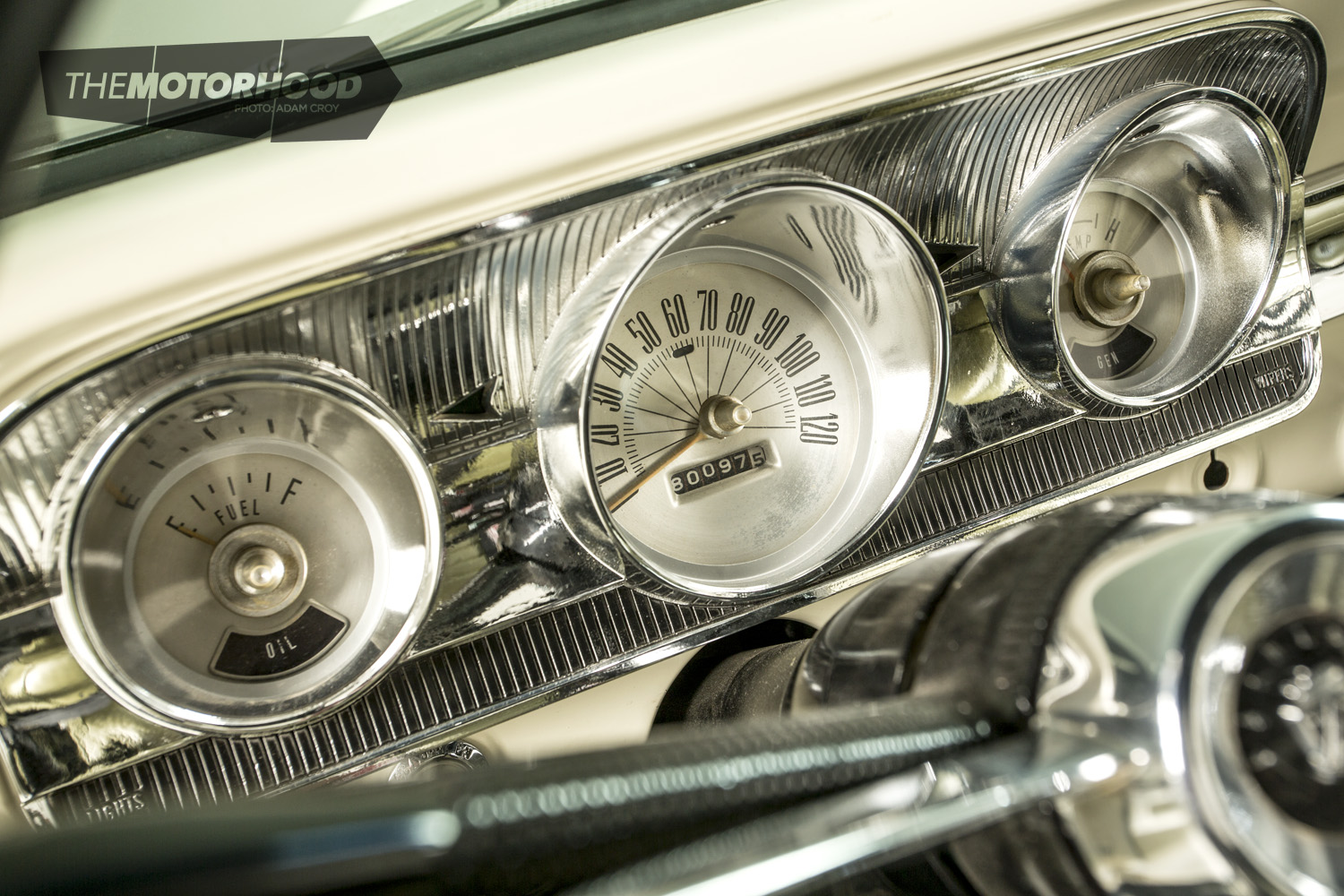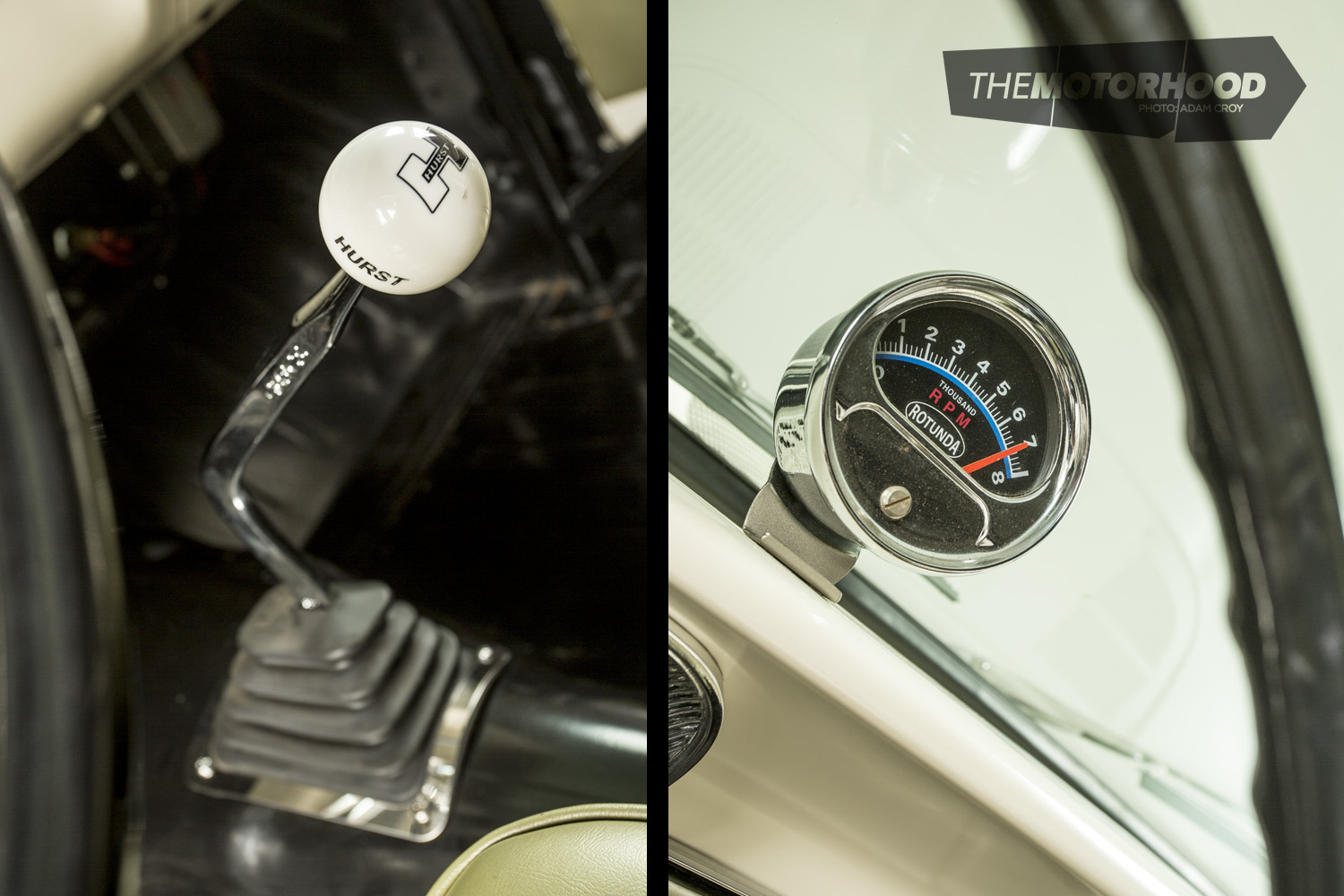data-animation-override>
“Cloning a classic takes on a whole new meaning when you look at Steve Keys’ Wimbledon White 1964 Ford Thunderbolt replica”
With a lifetime of cars to his name — hot rodding, drag racing, and vintage — Auckland’s Steve Keys shows no signs of slowing down. He has plenty of projects on the go at all times, with plenty more in mind. This 1964 Ford Thunderbolt replica started as an idea, which was further sparked when Steve saw a real Thunderbolt at the California Hot Rod Reunion one year.
“I’d always liked the idea of a Ford Thunderbolt. A few years ago I had a ’64 Galaxie but realized it was never going to be a Thunderbolt, so I sold it and looked at making a start on the car you see here,” says Steve. “The plan from the get-go was to build the car as closely as I could to a real Ford Thunderbolt, but I also wanted to take it to Drag Week in the USA.”

The Ford Fairlane Thunderbolt was a limited production, factory-experimental, drag race–only vehicle built by Ford in 1964. Only 100 were produced. The Thunderbolt was not built on a regular Ford assembly line, but in conjunction with Andy Hotton of Dearborn Steel Tubing. It was there that partially built Fairlane bodies in top-of-the-line ‘500’ exterior trim were combined with the 427ci FE engine and either a heavy-duty Lincoln automatic transmission or a BorgWarner four-speed manual transmission. The first 11 cars were painted in Ford’s Vintage Burgundy, while the remaining 89 cars were painted Wimbledon White, much like Steve’s version.

Knowing of no other Thunderbolts in New Zealand, Steve pored over the internet for many hours, looking at all the details and locating the required parts so he could faithfully clone Ford’s most famous quarter-mile warrior.
“I wanted to build it as faithfully as possible, with the exception of the six-point roll cage and the use of the Tremec five-speed,” says Steve.

With the goal of running at Drag Week, two criteria were immediately imposed on the build. First, the car would have to meet the required NHRA specifications. Second, the use of the five-speed gearbox would aid in drivability between the tracks, as each race car must drive under its own steam.

“Drag Week has evolved so much — it’s just about the dream of racing and driving your car in the USA. We’d be winning if we were still in one piece by the end of the week,” laughs Steve.
When Steve refers to “we”, he’s including Tauranga’s John Key, who is building a ’65 Chev Impala to take to the event.

With a folder full of research photos and articles off the internet, a donor vehicle from the USA, and all the reproduction Thunderbolt ‘conversion’ parts ex-USA, Steve visited Rocket Speed Equipment in Hamilton. Naturally, members of the Rocket team were excited to do something a little different, but they also learnt that Steve was trying to shoot for authentic. Things like the front suspension towers needed to be modified for the 427 to fit, as per original Thunderbolt specs, and the Rocket team needed holding back.
Steve explains, “Naturally, they wanted to do a nicely TIG-welded job, but I wanted it to look as if it had been done in 1964, so I asked them to MIG it and not be too nice!”

The 427 in question is a seriously trick piece of kit, based upon a Cobra Automotive Genesis 427 FE alloy block and assembled by Joe Lapine at Danbury Competition Engine in Danbury, Connecticut, USA. It’s topped by a pair of Air Flow Research heads and a genuine Ford medium-rise twin four intake, with the intake ducts plumbed into the inner headlight recesses, just as the real-deal Thunderbolts had.

One of the other pieces of engine bay eye candy is actually more visible from beneath the car; it is the intricately crafted OEM-style crossover headers, sourced through Crites Performance Parts. Just visible beneath the serious reverse-raked front end, the intermeshing primary pipes give a proper vintage dragster look, and, with only a pair of mufflers to impede their flow, the cackling bellow of 427 cubes of old-school muscle sounds absolutely glorious as it exits from the pair of side-exit exhausts. It should do, too, as Steve estimates the monstrous engine’s horsepower figure to be somewhere north of 600!

With such phenomenal power on tap, and a pre-existing requirement for an overdriven five-speed manual gearbox, you can see why the Tremec TKO600 was a no-brainer. However, a need for open-road drivability did not mean that Steve was going to take away from the raw, brute-force nature of the original Thunderbolts. No way! With a steel flywheel backing the FE engine, and a clutch system comprising Kevlar paddle-type clutch and Auto Clutch 5300lb pressure plate, the driveline will be able to harness each and every one of those 600-plus horses — though perhaps at the expense of Steve’s left leg!

This over-engineering of the Thunderbolt’s driveline extends to the rear end, where a stock nine-inch simply would not suffice. A Moser nine-inch with alloy head and 3.89:1 final drive ratio gives a bulletproof rear end, which should see the M&H slicks become the weak link every time Steve nails it — just the way it’s supposed to be!

Those M&H rear slicks are period correct, and they’re wrapped around authentic Ford wide steel wheels, measuring 15×8.5-inches. They’re complemented at the nose end by a pair of Mickey Thompson ET Front Runners, which, again, enclose some real-deal ’60s drag rims. These are genuine American Racing magnesium five-spoke wheels, as per OEM Thunderbolt spec, and, sitting beneath the Thunderbolt’s sky-high nose, they complete the car’s look. Even sitting still, it looks as though it is launching hard out of the staging lanes and that fibreglass nose is just searching for a thin white line 1320 feet ahead.

The end result of it all is that Steve, and everyone who had a hand in the build, nailed it! Close your eyes and it’s 1964 all over again — from the front tow brackets, column shift delete, radio delete, and rear window winder delete to the original drum brakes and Lexan windows — and that was the point. Initially, Steve thought he would get the Thunderbolt on the street here in New Zealand, but it ended up a little wilder than anticipated — he figures the unique, but authentic, rear end set-up of 1964 Ford Thunderbolt design might be better suited for interstate driving between racetracks in the USA.
“Right from the rear end set-up and cutting the strut towers, I tried to do everything that Dearborn Steel Tubing did back in the day. Crites Performance Parts make most of the required parts, from the fibreglass hood to the ram air induction, and so on. Not having a car you could look at was tricky — I relied on photos. Would’ve loved to reference an original car, but that wasn’t the case. Everyone has a different version of a clone is different, but I wanted to get as close as I could,” Steve explains.
The end result is a car that reminds us of the rich drag racing history associated with Dearborn, Michigan. Thankfully, guys like Steve Keys are holding the candle of the past and allowing it to burn brightly for us all to enjoy. We look forward to following his Drag Week tour in the USA!
1964 Ford Thunderbolt
- Engine: 427ci Ford FE big block, Cobra Automotive Genesis 427 FE alloy block, Air Flow Research alloy heads, OEM Ford medium-rise twin four barrel intake manifold, MSD ignition, Crites Performance Parts original-style crossover headers, custom alloy radiator
- Driveline: Tremec TKO600 five-speed gearbox, steel flywheel, Kevlar paddle clutch plate, Auto Clutch 5300lb pressure plate, Moser nine-inch rear end, dyna track, alloy head, 3.89:1 final drive ratio
- Suspension: OEM Ford Thunderbolt spec, 90/10 front shocks, weld-on traction bars, parallel rear leaf springs
- Brakes: OEM Ford drum brakes, tandem master cylinder
- Wheels/Tyres: 15×4-inch American Racing magnesium five spokes, 15×8.5-inch Ford steel wheels, 26×4.5×15 Mickey Thompson Front Runners, 28x9x15 M&H slicks
- Exterior: Fibreglass ‘teardrop’ hood, lightweight bumpers, Lexan side windows, Lexan rear windows, Wimbledon White paint
- Chassis: Modified front strut towers, modified inner guards, NHRA-spec six-point roll cage
- Interior: Dodge Econoline seats, original steering wheel, Hurst shifter, original gauges, Rotunda half-sweep tachometer, factory radio delete option
- Performance: Untested
This article was originally published in NZV8 Issue No. 124. You can pick up a print copy or a digital copy of the magazine below:






